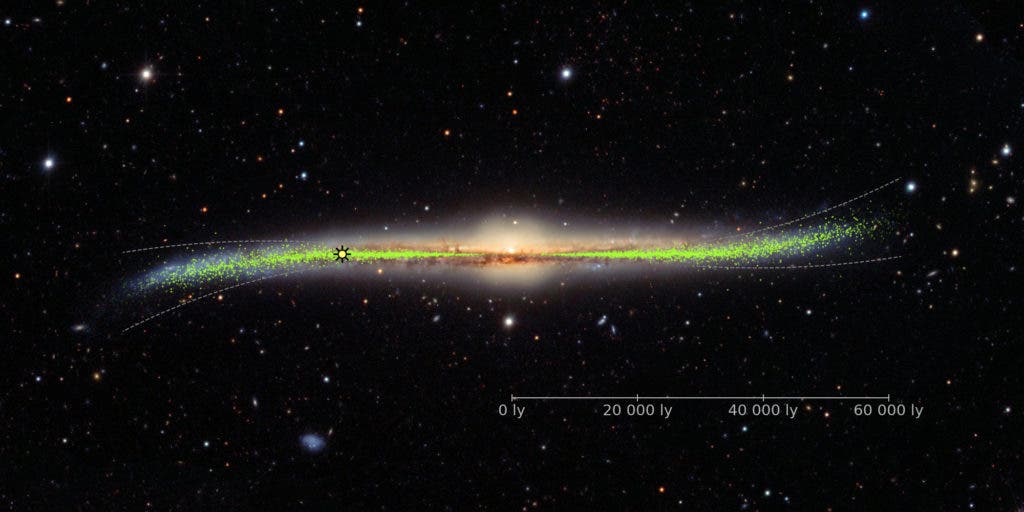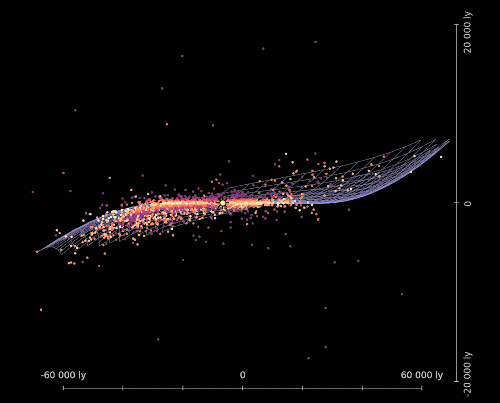In February, a study challenged the long-standing idea that the Milky Way is shaped like a flat disc. Instead, researchers found that our galaxy’s outer edge is warped and twisted. Now, a second study has new evidence to back up this claim.

It’s quite difficult to determine the shape of a galactic structure you’re a part of. Imagine being a really clever cell part of the human body — you could determine the shape of outside creatures like cats, dogs, or other people, but the shape of your own body is much more difficult as you don’t have a good vantage point. Luckily, there are some tricks that scientists can use. Just like the original research that investigated the Milky Way’s shape, researchers at the University of Warsaw in Poland also employed Cepheid variable stars as markers to identify the edges of the galaxy.
Cepheids are hot and massive stars that have five to twenty times the mass of our sun and up to 100,000 times as bright. They pulsate radially for days to months at a time — and this period of pulsation can be combined with the Cepheid’s brightness to reliably establish its distance from the sun.
Because they are so bright, Cepheids can be clearly seen millions of light-years away and can be easily distinguished from other bright stars in their vicinity. This makes them indispensable tools in astronomers’ kit. For instance, it’s thanks to Cepheids that Edwin Hubble and Milton L. Humason were able to prove that the Universe is in a state of expansion.

In their new study, astronomers at the University of Warsaw determined the position of 2,431 Cepheids found throughout the Milky Way via the Optical Gravitational Lensing Experiment (OGLE), a project that tracks the brightness of billions of stellar objects. In addition to OGLE data, the authors also tapped into other variable star catalogues such as the General Catalogue of Variable Stars (GCVS), the All Sky Automated Survey (ASAS), the All-Sky Automated Survey for Supernovae (ASAS-SN), the Asteroid Terrestrial-Impact Last Alert System (ATLAS), and Gaia Data Release 2 (Gaia DR2).
All these thousands of Cepheids act like 3-D beacons, which allowed the researchers to reconstruct the precise shape of our galaxy — a spiral galaxy which is a little warped and twisted around the edges. What’s more, this warped edge contains many young stars, which is quite unusual.
“Our map shows the Milky Way disk is not flat. It is warped and twisted far away from the galactic center,” said co-author Przemek Mroz. “This is the first time we can use individual objects to show this in three dimensions,” some, he said, “as distant as the expected boundary of the Galactic disk.”
What caused this curvature is yet unknown although there are some possible explanations, including a near-collision with another galaxy and dark matter. More studies are needed to shed light on the issue.
The findings appeared in the journal Science.


